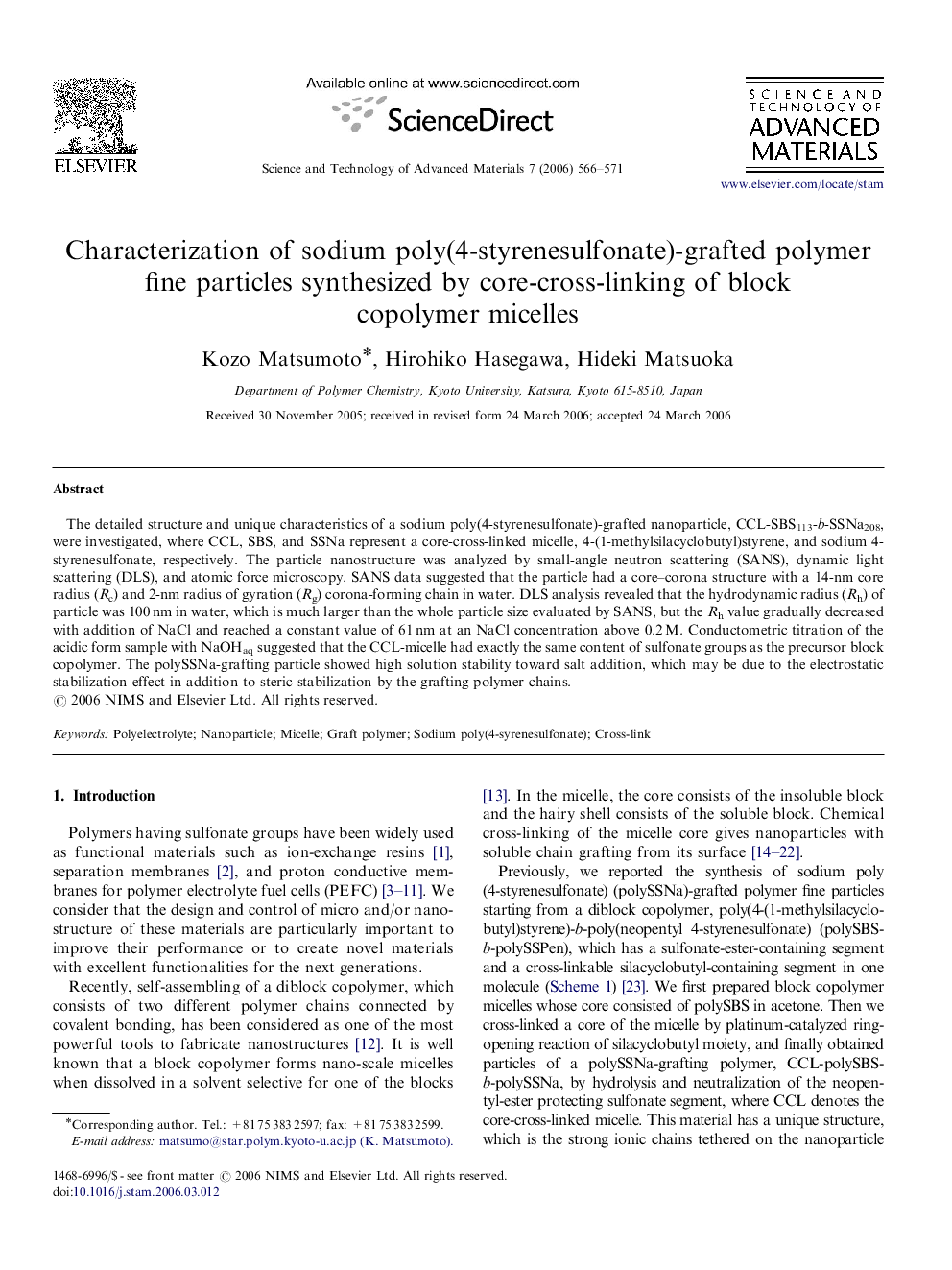| Article ID | Journal | Published Year | Pages | File Type |
|---|---|---|---|---|
| 1590979 | Science and Technology of Advanced Materials | 2006 | 6 Pages |
Abstract
The detailed structure and unique characteristics of a sodium poly(4-styrenesulfonate)-grafted nanoparticle, CCL-SBS113-b-SSNa208, were investigated, where CCL, SBS, and SSNa represent a core-cross-linked micelle, 4-(1-methylsilacyclobutyl)styrene, and sodium 4-styrenesulfonate, respectively. The particle nanostructure was analyzed by small-angle neutron scattering (SANS), dynamic light scattering (DLS), and atomic force microscopy. SANS data suggested that the particle had a core-corona structure with a 14-nm core radius (Rc) and 2-nm radius of gyration (Rg) corona-forming chain in water. DLS analysis revealed that the hydrodynamic radius (Rh) of particle was 100Â nm in water, which is much larger than the whole particle size evaluated by SANS, but the Rh value gradually decreased with addition of NaCl and reached a constant value of 61Â nm at an NaCl concentration above 0.2Â M. Conductometric titration of the acidic form sample with NaOHaq suggested that the CCL-micelle had exactly the same content of sulfonate groups as the precursor block copolymer. The polySSNa-grafting particle showed high solution stability toward salt addition, which may be due to the electrostatic stabilization effect in addition to steric stabilization by the grafting polymer chains.
Related Topics
Physical Sciences and Engineering
Materials Science
Materials Science (General)
Authors
Kozo Matsumoto, Hirohiko Hasegawa, Hideki Matsuoka,
